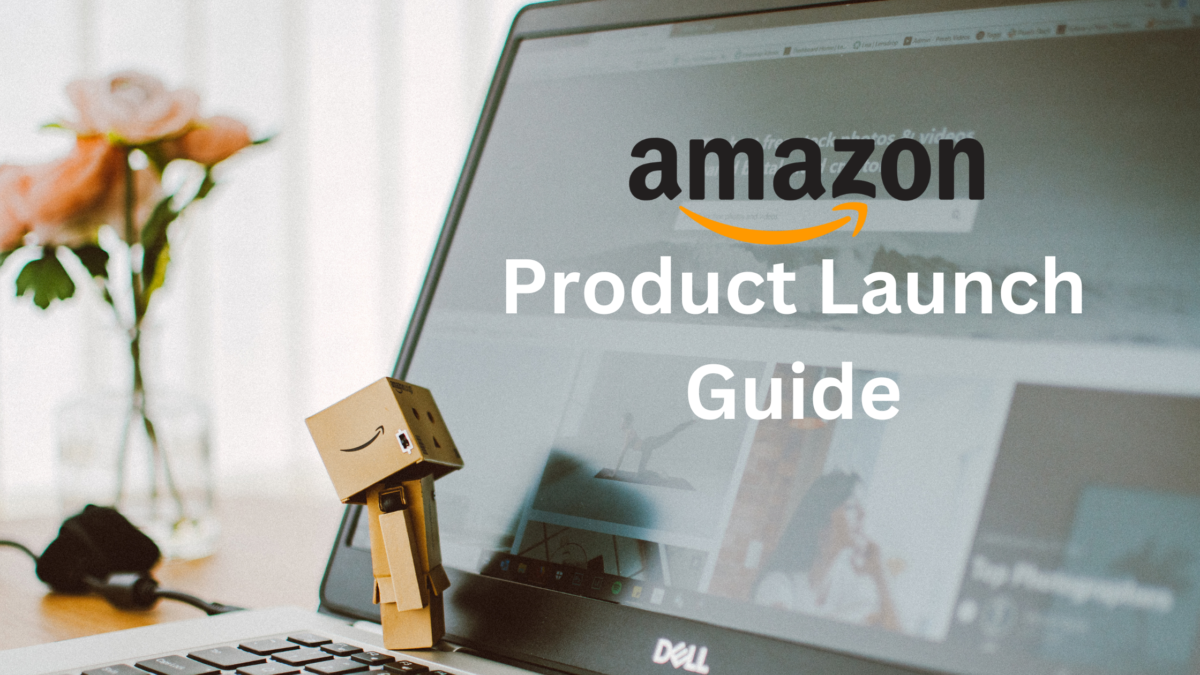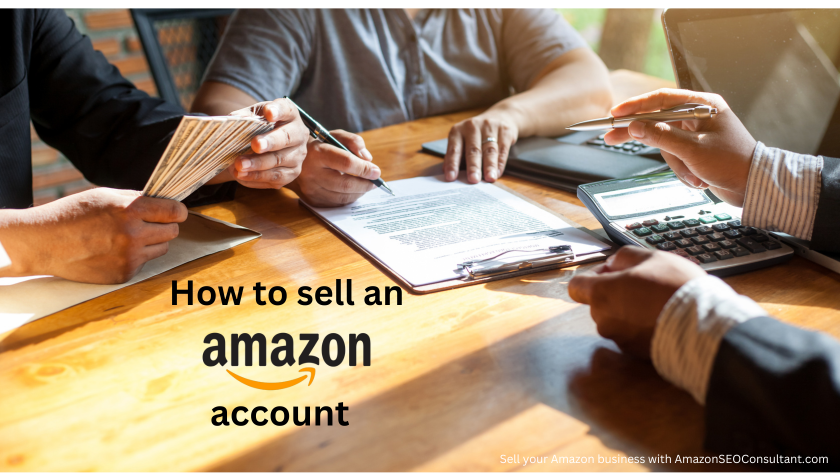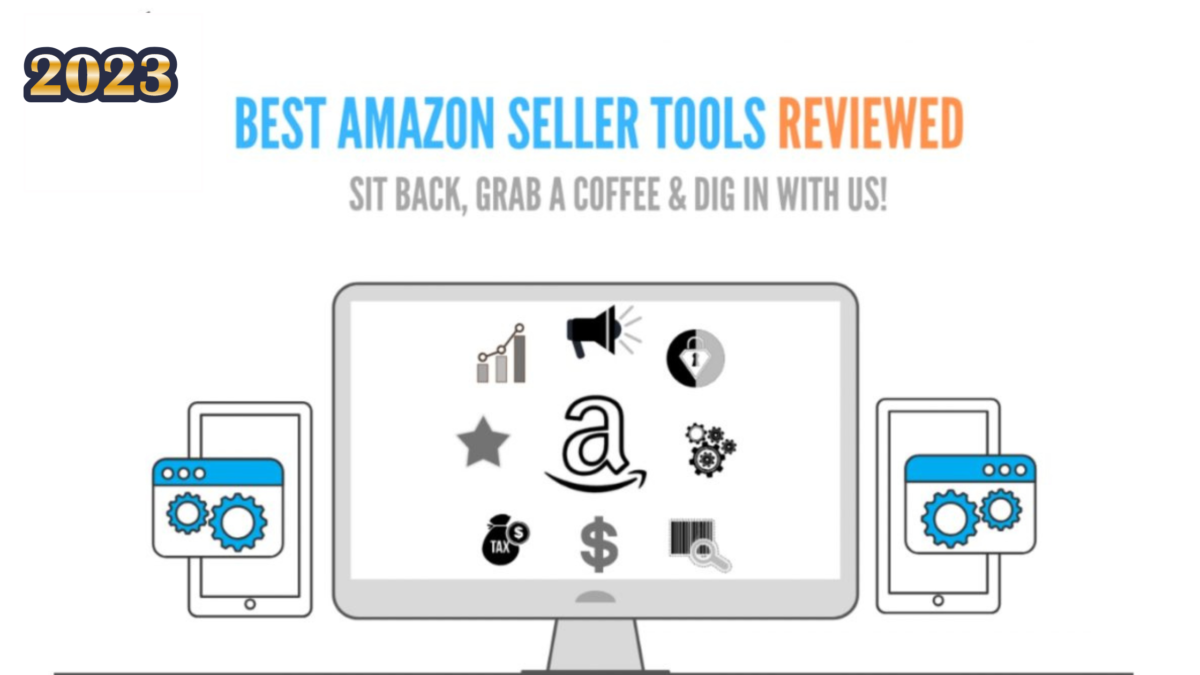
At the time of writing we’ve successfully ranked 900+ products to page 1 of Amazon. In 2023 we’re well on track to ranking 1000+ more.
In this Amazon SEO Guide, we’ll be explaining exactly how the Amazon’s A9 algorithm works, the technicals of their search engine and most importantly how you can rank in Amazon and profit through these ranking strategies.
First things first.
What is Amazon SEO?
In this post we’re going to be breaking down everything you need to know to rank in Amazon, diving into the A9 algorithm itself and explaining what Amazon SEO (2023 and beyond) really is from a technical point of view. If you decide you would rather enlist our expert help so that you can dedicate your time elsewhere, feel free to request a proposal from us at any stage – allowing us to rapidly boost your rankings and profits with our unique ranking process.
If you’d rather handle it yourself, stay right here as this is arguably the most in-depth guide to Amazon SEO on the web. In fact, there isn’t even an argument.
We will go into some Amazon SEO guidelines in detail and help you on the to becoming an Amazon SEO expert in the long run.
Finally, we’ll talk about how our Amazon marketing agency has managed to rank products to #1 in incredibly high competition keywords and the exact strategies to enable you to do the same.
An Introduction to the A9 Algorithm: What Is A9?
A9 is the proprietary search algorithm developed by Amazon. It has one job – answer the customer’s query with products that are most likely to sell. Also, it’s NOT Google.
Ironically it’s been updated to be called A10 more recently – but with the original 9 referring to the amount of letters in “algorithm” – this doesn’t really make sense and A9 is still the correct term for the Amazon SEO algorithm as a whole.
Amazon has always been happy to let A9 fly under the radar. Don’t get me wrong – A9 has been revolutionary, to say the least. We all love how Google seamlessly adapts its SERPs to your browsing habits, but A9 floated this idea successfully way back in 2004. A9 also pioneered visual street views long before Google Maps was a thing. The point is – despite being the most valuable company in the world, Amazon isn’t really keen on pushing A9’s reputation as a wide-lens search engine. In fact, you wouldn’t even find many everyday people who have ever heard of the A9 algorithm.
One simple reason – Amazon is not in the search business. I will expand on this point in a bit, but if you understand this piece of logic, you’ll have no trouble following me as I crack this wonderful algorithm open for you. After all, Amazon SEO marketing is often about leveraging search results
Amazon Doesn’t Have Search Intent Problems.
What Is Searcher Intent? – Searcher intent is simply the type of request or query a specific user is looking for. For example, searcher intent is extremely obvious when terminology such as “buy” or “sell” is used. This is 100% commercial intent. E.G. “buy shoes” “sell my car” etc.
Whereas other intents, such as informational, e.g. “how to” guides are also searched by users in YouTube, Google and other major search engines.
Amazon though, being a product based search engine, doesn’t have this issue.
That’s extremely valuable because people coming to Amazon are looking to do one and one thing only:
Buy Stuff!
As sellers on Amazon, we don’t have to navigate this intent issue when building listings, instead we want to focus on selling more. The best way to do that? Higher organic rankings on Amazon. Rank higher, attract more eyeballs, win more clicks, sell more products – it’s a crystal clear piece of logic that many sellers still get wrong.
Of course, there is still some level of intent to be aware of when it comes to analysing keywords – but this is more about product type.
What Are Organic Rankings On Amazon?
Organic rankings are the term used to describe the products listed below Amazon’s paid advertising (which we’ll get onto in a second) that are listed for each search query.

Amazon Advertising Types – PPC, Sponsored products
As you may already know, there are many types of advertising you can do on the Amazon platform. As this is an Amazon SEO guide and not an Amazon advertising guide we’ll only be briefly touching on these in this post.
Amazon Sponsored Products (Commonly referred to as Amazon PPC)
These are the “sponsored” results you see when you search a query on Amazon. Usually at the top of search results, as well as mid-way through pages. These are easy to spot due to the sponsored text just above the Amazon product listing title.
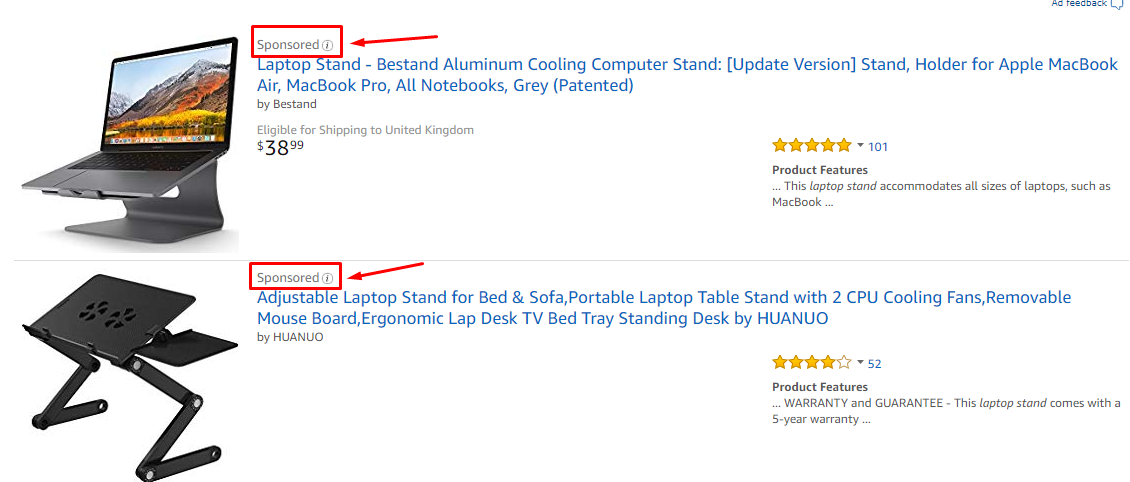
Amazon Headline Ads
The second type is headline ads. Headline ads are simply the image based advertising you see at the top of a search result, usually with the logo or branding information of the company.
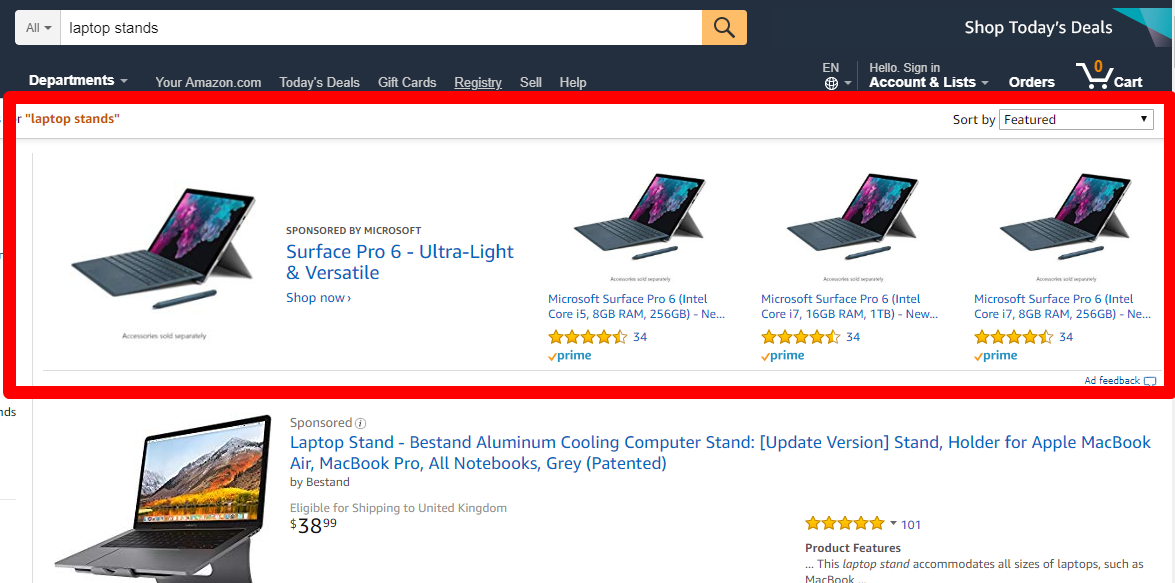
There are multiple other types of advertising on Amazon but for the purpose of this guide, we’ll only be referring to the two mentioned above. Both are great and can be highly effective in their own ways. I’ll stop myself short of digging deeper into the details of Amazon advertising (we have a handy Amazon PPC guide ready for you, just in case) and move onto the nitty-gritty technicals of Amazon’s fascinating and powerful organic search engine that is A9.
The Amazon A9 Algorithm Is Kinda Like Google’s Younger (Stupider) Brother
Google Search is one of the most advanced algorithms ever created. Amazon A9 – not so much.
How do we know? – Our sister agency (HQ SEO) has worked with Google’s algorithm for over a decade, decoding ranking signals, analysing search trends and generally testing what equates to what specific granular ranking result.
Amazon, on the other hand, has far fewer ranking signals and factors that we’ve found have been much easier to reverse engineer in close to 1/10th of the time. What really helps is that most of these lie comfortably within Amazon’s own, closed eco-system.
I’ll continue with the ‘business model’ point of view I touched upon in the introduction.
Google NEEDS the most precise search engine on the planet. Amazon on the other hand, really just doesn’t. Instead, they have to focus on operations, logistics, billing to users, warehouses, servers, deliverables, customer service etc. Which is why the investment into the search engine probably isn’t at the top of the “to-do” list for the Amazon executives, whereas for Google it is.
Which is great (and profitable) for us.
Throughout this post, we’ll be explaining the exact Amazon SEO process we’ve used to rank clients in Amazon’s various marketplaces: Amazon US (amazon.com), UK (amazon.co.uk), Canada (amazon.ca), Europe and Asia.
Regardless of the marketplace, A9 remains the central nervous system of Amazon Search. So, it doesn’t really matter which platform you sell on – the principles and strategies we’ll discuss here can be leveraged to rank your products higher.
Let’s get started!
Important: Understanding Amazon’s Ranking Signals
Every single time someone hits the ‘Search’ button on Amazon, dozens of ranking signals come into play. For easier understanding, let’s divide the most important of these into two broad categories:
A. Code and content of a listing (on-page signals)
B. External factors (off-page signals)
We are in full control of most on-page signals if not all. Off-page signals have a wider range – from your competitors’ actions to customers shopping history, and we will, at any given time, only have partial control of these.
Stage 1: Ranking on Amazon Starts with Research (Pre-Optimisation)
In this stage of the post, we’ll be outlining everything we recommend as a part of the ‘pre-optimisation’ process. This involves all actions that need to be taken BEFORE you even start optimising the code and content of a listing.
Most of these relate directly to the way you do your business. Needless to say, these are all extremely important. It’s quite likely that you have already completed these – but if you haven’t, you need to sort that out ASAP!
Competition Analysis
Competition analysis involves determining what product or products to launch into a marketplace and how competitive the landscape is for your chosen channel. You can implement competition analysis over an entire industry, but for obvious reasons, we’ll be analysing Amazon only.
There are a few core takeaways we’re looking for when we run a competition analysis report;
-
Can we make our current product better? (Value Addition)
We can do this by looking at the positive and more importantly negative reviews of similar products in the marketplace and analysing if adding simple features to the product will add long-run improvements. This is a process we’ve used for multiple personal and client projects with great success. Something you may determine to be irrelevant could be the difference between the scathing 1 or 2-star reviews and the glowing 4 or 5-star ones!
-
What do the markets say? (Profitability and Revenue Analysis)
Is there enough demand in the marketplace to justify our entry?
This is a more important question for larger companies that want to earn a certain amount once established within Amazon. Smaller sellers and just-starting-out businesses should still do this – just not as rigorously, while paying more attention to the point below.
-
What’s the core competition for our target product? (Cash Flow Budgeting)
Cash flow budgeting is a critical pain point that bottlenecks the growth – especially for smaller sellers.
If profit per month once established is estimated at $50,000/month but it’s going to cost around $200k to reach this point, is this something we can invest in?
A simple question if the figures are on point, but a bit more difficult when there’s a lot of estimation going around.
-
How much will it cost to rank/gain traction? (Gaining the Market Share)
Similar to the above point, what’s the investment to gain initial share in a market for this product?
Although accurate figures are incredibly difficult to arrive at, simple common sense will help you understand whether you should be targeting a particular term/keyword or looking into something less competitive.
Competition Analysis Tools & Software
Luckily answering these questions isn’t overly difficult with the use of a number of advanced software on the marketplace. My personal favourite in 2023 is Helium10 but you can see our massive list of Amazon seller tools here for more ideas, including some great Amazon SEO tools.
All this information is essential to develop a proof of concept before starting a campaign. You want to be 100% sure you have as good a product as a competitor (if not better), or, in the least, you can differentiate yourself in some way – which brings us on to the next part.
Target Audience & Buyer Persona Creation

Defining your target audience & building accurate buyer personas is something even billion-dollar brands make mistakes with. But the basics & core concepts are simple:
- Who are you looking to sell to?
- What are their traits, tendencies and desires to purchase?
If you already have a product developed, branded and packed, this should be relatively obvious from your branding. If not, you may want to consider going back to the drawing board.
Developing buyer personas and understanding at a fundamental level what drives them to buy products like yours can really push your sales off the charts. Some points to consider in this context are:
- Premium ‘name’ brands vs price-oriented ‘value’ brands (We have discussed this point at length in our pricing strategy post).
- Branding, colours & packaging.
Both strategies, when implemented correctly, work great. A word of caution: Please don’t try doing both at the same time. Understand your brand and target audience and simply market to them.
There’s a lot of information on buyer personas and target audience creation online. In fact, there’s probably too much information and it’s very easy to lose the focus. All you need to realise here is that even though the scope of organic rankings within Amazon is limited, you will still be selling to real people with real personalities, needs and expectations. Understanding the target audience takes you one step closer to making a real-world connection with your potential customers. Just as importantly, this helps when it comes to the copywriting & on-page optimisation stages of a successful Amazon SEO campaign.
Keyword Research
It wouldn’t be SEO for Amazon stores without keyword research!
Amazon recently announced they’d closed a “loophole” that allowed third parties to generate accurate keyword data for sellers to use.
Although I’m still not totally convinced on any one particular software for keyword research, there are a few on the market that are “good enough”. Before we talk about those, it’s important to note what we’re trying to achieve:
Essentially we’re looking for all keywords that have search volume related to the product we’re selling. Below is a video talking about keyword research for Amazon in more details. Although I don’t recommend going for the tool used in the video, I’d still suggest you watch this just to understand the thought process.
The only 2 recommended Amazon keyword research software we use in-house are Viral Launch and Helium10.
Tracking Keyword Positions
In the ever-shifting Amazon universe, nothing really stays the same. New features, new trends, new products and new sellers – there are enough forces out there trying to dislodge your listings from the top of the Amazon SERPs.
To make sense of all this chaos, it’s essential to track keyword rankings day in and day out. Organic rankings for your specific keywords should be considered a major ecommerce KPI to your Amazon business as any drops will massively impact sales.
Tools like KeyworX do this for you automatically on a daily basis. Once you spot the problems and identify potential reasons for drops, it becomes infinitely easier to fix the impacted listings. We highly recommend using something like this so you can see what’s actually going on with your listings without manually searching hours a day.
Every Keyword You Don’t Rank For Is A Missed Opportunity That Costs You Money. Don’t Burn Through Your Marketing Capital With Bad Keyword Research. Watch How Our RANK Process Has Unlocked Phenomenal Ranking Possibilities For 500+ Products.
Let’s Go
Every Keyword You Don’t Rank For Is A Missed Opportunity That Costs You Money. Don’t Burn Through Your Marketing Capital With Bad Keyword Research. Watch How Our RANK Process Has Unlocked Phenomenal Ranking Possibilities For 500+ Products.
Let’s Go
Stage 2: Amazon Product Listing Optimization (On-page Optimisation For Amazon Listings)
Once buyer personas, keywords and competition analysis have been completed, it’s time to launch on Amazon.
You’re here to learn How to actually rank a product first in Amazon. The Amazon SEO process starts right here: with on-page optimization.
Once live, Amazon’s algorithm will crawl your listing and analyse its content to determine what you are selling. It will then categorise the on-page content and combine it with all other signals to “rank” you in a certain position based on what the customers are searching for.
This is how all search engines work, and Amazon SEO optimization is no different: Search engines have multiple signals that are used to determine the relevancy of the search result (whether that be a website or a product) and then rank these results based on the “score” that’s received. The higher the score, the higher the rankings.
On-page optimization is a part of this “score” we can control.
Amazon product listing optimization is broken down into 6 major parts.
- Product Listing Title
- Bullet Points
- Description or Enhanced Brand Content
- Back-end Search Terms
- Category
- Benefit Driven Imagery
To get an idea about these, we’ll tackle each point separately.
Before doing that, it’s important to understand 2 core points:
- Sales > Everything Else: Amazon will rank products that generate them the most revenue. If your on-page optimisation is terrible but you have the best product at the best price and sell thousands more than the next best competitor, you’ll still rank 1st.
- Copywriting & Conversions: copy is still extremely important, especially if you are selling higher priced products. Copywriting should cover the benefits of the product, related back to key features as well as “the Benefits of the Benefits” Think old school advertising and copywriting concepts and don’t try to save an hour by stitching together a terrible copy. It’ll cost you in the long run.
Important: Don’t Forget Mobile!
You’ll be writing and reviewing these listings on your laptop/desktop computer, but always check what the listing looks like on mobile before committing to any changes. Back in 2015 TIME posted that more people shop on Amazon using a smartphone than a desktop now. Now the statistics are even more skewed.
Amazon Product Listing Title Optimization
The title is one of the most basic ranking factors, and how Amazon determines what your product is. There are some core optimisation strategies for your Amazon listing title:
- Add your primary keywords to the title – The highest search volumes & most relevant to your product.
- Add a CTR element – Some part of the text to help “win the click”
- Include your brand in the title.
- 200 Characters or less (as of 2020, with potential to change again soon) although Amazon does change this frequently.
- Leverage pipes (|) or dashes (-) to help improve the readability of the post and break up target keywords.
- Avoid keyword stuffing. It won’t ever help you rank. Worse yet, it will put off customers that somehow find your listing.
In short, ensure you have your primary keywords in the title, with a clear benefit driven title. Two good examples of great title optimization are below.

Where possible, throughout your title you want to include elements that would “win the click” through to your listing. Elements such as “24 hour playtime” or “built in mic” are good examples of this. These should also be secondary keywords for your product.
Titles can also be cut-off or paginated if they are too long for the specific category or product search query. This is based on a number of different elements. By simply looking at competing listings, you can see the length the title gets cut off at for your products.
Bullet Points
The bullet points of an Amazon listing are where you sell your product.
This is where sharp copywriting techniques that can fuel consistent conversions come into play. By simply rewriting these bullet points, we’ve seen conversion bumps of 15-25% for our clients. Don’t let anyone tell you that your customers have no time to read these. They do – so, you should care!
How To Optimize Amazon Listing Bullet Points?
- Add the key benefits of your products.
- Talk about why these benefits are better than what your competitors bring to the table.
- Add any value-adds you have for your product: An additional e-book, a bonus accessory and all other incentives (keeping in mind Amazon’s category-specific ToS, of course!).
- Include as many primary & secondary keywords as possible without ruining the copy.
- Add a trust element to entice the purchase ‘right now’.
I’ve come across countless great products that miss out on potential sales just because of missing these points – especially the trust element.
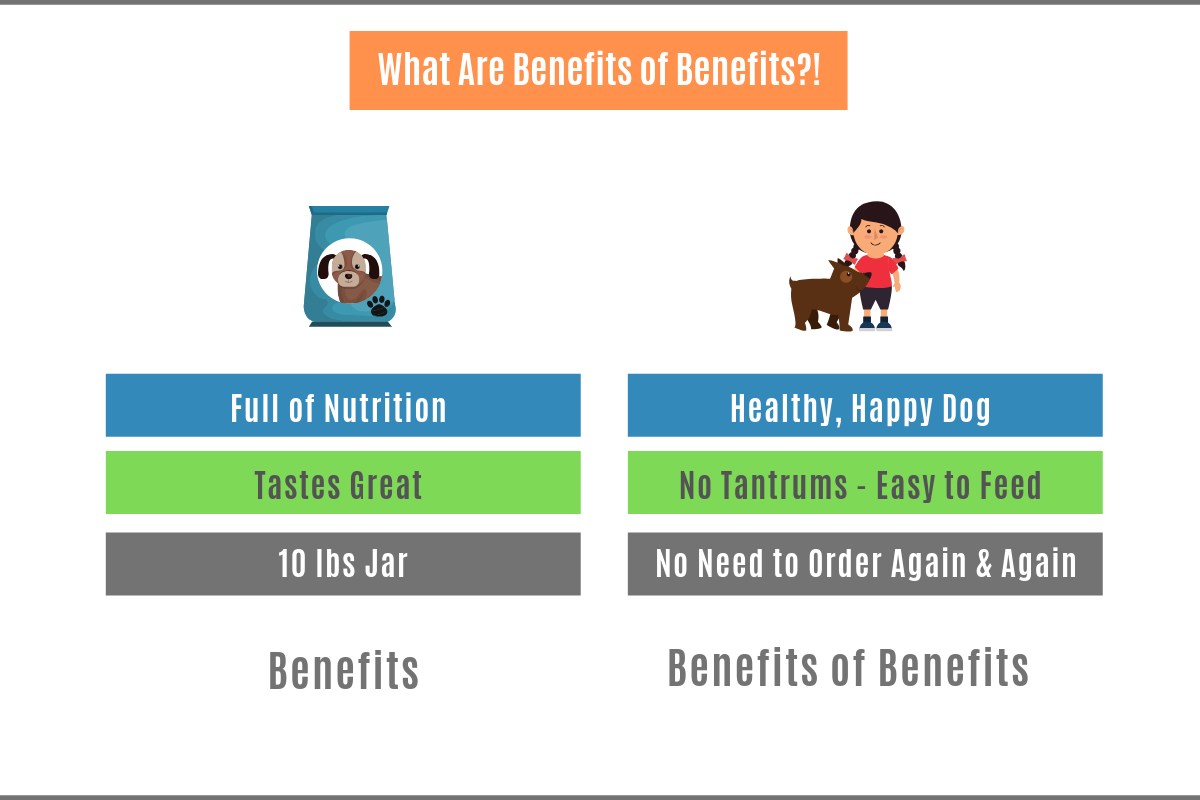
If you can’t assure the customer that buying your product is the right AND safe thing to do, you are going to struggle. Some ideas to establish trust within bullet points are: “Free Returns If You Are Not 100% Ecstatic” , “100% Satisfaction” , “30-day Moneyback Guarantee” .
Here’s an example of GREAT bullet points:

Bad Bullet Points Are a Turn Off. Here Are Some Tips to Tidy Up Yours:
- Ensure you use Capitalisation (The First Letter Of Each Word Capitalised, AKA Title Case).
- Write for users first, then sprinkle some keywords in.
- Take cues from stage 1 (pre-optimization). Let competition analysis and buyers personas define how you want to ‘pitch’ and ‘position’ your product.
- Browse through similar listings with negative reviews and try to understand how those products deviated from what the customers were expecting. Build bullet points that sell – without undue/false promises and tall claims.
- Understand what your customers’ pain points are. Visualise what holds them back from hitting the ‘Add to Cart’ or ‘Buy Now’ buttons. Overcome these points in the bullet points.
- Add social proof throughout where possible.
- Keep things simple. Use clear, concise language, don’t confuse people with tech jargon (unless your target audience would understand it).
When a user is reading your bullet points, it means they are very close to pulling the trigger on a purchase. They’ve searched a specific keyword, found your listing, clicked through and most likely reviewed the price, images and reviews, too. They just need a tiny push to convert into a customer – potentially a life long one.
Don’t skimp on the bullet points: It’s an integrated part of the Amazon SEO equation, especially when we look forward to the future and how conversions may impact organic search rankings.
Product Descriptions & Enhanced Brand Content Optimization
The product description section is the ugly, small, wall of text you’ll see at the bottom of a typical Amazon listing.
Although there haven’t been any studies I’m aware of, I highly doubt users read this description before making a purchasing decision (I know I rarely do). It’s just too much text that isn’t all that relevant to the customer.
A good way around the monotonous and boring descriptions is Enhanced Brand Content (EBC).
Enhanced Brand Content is presently reserved for brands that are enrolled in the Amazon Brand Registry. It’s supposed to tie together the product and its features with your brand in a visual and attractive way.
Here’s how an EBC listing stacks up against a regular, HTML listing in terms of the product description (both screenshots are taken on desktop search).
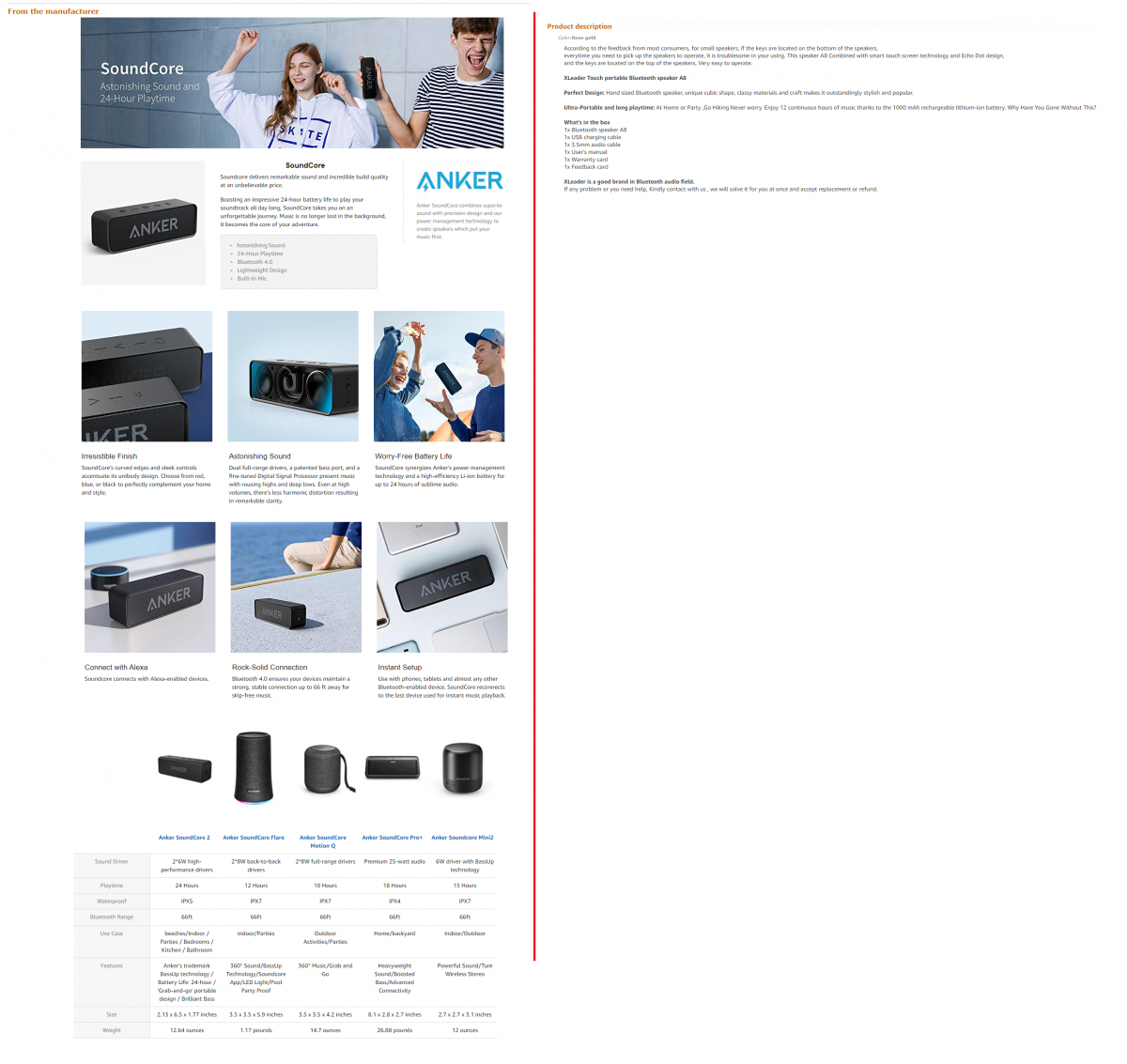
If that were the only information you had to go off, which product would you purchase?
If you have access to EBC, it opens up a whole new world of opportunities. In the product description part, you should aim to tell a story of your brand before moving on to talking about the product features and benefits.
Remember the type of person still making a purchase decision is looking for something to tip them over the edge, to exchange their cash for your product. Determining what this factor may be is tough, but this is also where you can utilise your buyer persona and competition analysis research.
How Do You Go About Enhanced Brand Content Optimization? How to Write an Amazon Product Description That Sells? Here Are Some Key Points:
- Tell the story of your brand. Why and how did you start? What’s your passion behind doing this? What sets you apart from other brands? Why should I care?
- Expand on product features. What’s the core USP? How does this help me? What problems does it solve for me?
- Establish trust on a personal level. Why should I trust you, your brand and your product? Have a lot of people been happy with this product? Is it worth the money? Do I get any guarantees?
- Take questions out of the question with multiple scenarios of use. How does this thing work? How do I use this? Is this easy to use? Is this going to take some figuring out?
The fourth Key Point is multiple scenarios of use. This is essential for higher-end products and the ones that will be constantly visible (home, kitchen etc). If this is the case, you’ll need to include imagery about what that product would look like in various scenarios (in a positive light obviously). A brand that does this very well is the Sony speaker.
Their visuals show the speaker in use in multiple locations and each actually targets an individual demographic. These brands don’t just put a speaker on a palm tree or surfboard for fun. These help visualisation of the product in action and hence increase conversions and sales.
These visuals are also pulled back to a benefit of the product, making for an incredibly well-built description utilising the enhanced brand content perfectly.
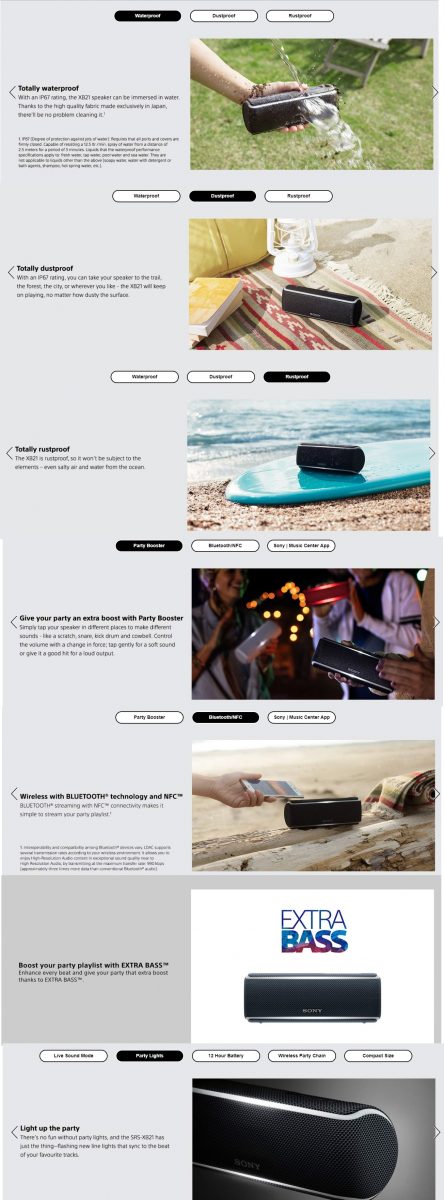
Back End Search Terms
Amazon overhauled the back end search terms infrastructure in 2018,
Moving on from this (5 distinct fields):

To this (just a single field):

This was likely due to over-optimisation of the search terms that we saw on a regular basis. What was supposed to be a handy, helpful tool was abused by MANY, MANY sellers. The fact that it worked so well for them for so long was an obvious problem that we all expected Amazon to sort out ASAP.
Optimization of back end search terms inside Amazon Seller Central is relatively straight forward. It is also one of the most integral parts of the Amazon rankings process itself.
Ensure you have as many keywords in this section as possible. There’s no need to format these in any way, but we do recommend starting with the highest search volumes and working through without duplication of terms.
For example, if you have a keyword list that includes the terms “speaker”, “bluetooth speaker” and “portable bluetooth speaker”, you shouldn’t go for back end search terms as: speaker, bluetooth speaker and portable bluetooth speaker. That’s just a waste of characters. Remember – you now have only 250 bytes (~250 characters) to work with in total.
What you should aim to do is prioritize long tail keywords that already contain other top keywords.
Here, a term like portable bluetooth speaker does that job perfectly well.
This is a simple way of making the most of the limited character space Amazon gives you to enter back end search terms.
Image Optimization
Image optimization within Amazon is a tricky one. There are a lot of guidelines around the types of images to be uploaded and what they should and shouldn’t contain.
For the most part, especially for the primary images (the ones that appear in the search results), you’ll want to keep to these guidelines. Image optimization has a direct impact on conversions. Most consumers instinctively judge a product based on the imagery – so, it’s important to get this part right.
Amazon Image Optimization Tips:
- Ensure your product is on a white background.
- Ensure the image is large enough to allow users to zoom in for a closer view. Amazon recommends having at least 1280 pixels on the longest side. Ideally, you should go for ultra-HD images that have 2560 pixels (or more) on the longest side.
- Take control of the visual aspect of each listing with Benefit Driven Imagery.
Benefit Driven Imagery On Amazon
A term I believe we coined in regards to Amazon image optimization.
You’ve probably seen this multiple times all over Amazon. It’s incredibly effective at getting the key points and benefits across without having the user read the specific bullet points or scroll down to the Enhanced Brand Content. What’s more, you can make sure that you don’t miss out on potential sales from users who are just browsing through multiple products. If they spot a feature they like, you’ve got an instant sale!
Here’s an example of the great use of benefit driven imagery (BDI).

Currently limited to some of our partners, we hope to include BDI as a part of our services to all Amazon sellers – pretty soon. Feel free to contact our team for more details and of course, you can always order rankings directly from us, propelling your products up the rankings without having to put all the time into it yourself.
SEO Amazon Listing Optimization Tips: A Recap
- Make reference to positive reviews throughout your copy, bullet points and description.
- Sell the benefits of the product, not the features.
- Talk about benefits of benefits – or, at least hint towards these. For example: When selling a Bluetooth speaker the benefit is great clear sound wherever you go. The benefit of this benefit is – This enables you to have a unique party on the beach in the sun with models. Another benefit can be – It’s waterproof. The benefit of this benefit is – Enjoy your favourite tracks even in the shower.
- Always start with who you are selling to – Selling to everyone is selling to no-one.
- Use professional, informative and benefit-driven imagery with bright, appealing, vibrant colours.
- Implement test pricing strategies throughout your Amazon journey.
Ranking First in Amazon – Video Tutorial
Ranking In Google As Well As Amazon
Although this is a guide on Amazon SEO, there are a lot of key elements we can implement that will also help your Amazon listing rank within Google too.
Amazon products rank for some of the most competitive terms online, so leveraging these strategies using Amazon’s domain authority can equate to a successful ranking campaign in both Amazon and Google.
Optimising For Google
This is very similar to what we’ve mentioned already. Ensuring you’ve built a keyword rich title, description and bullet points is half the battle. Unfortunately, it’s just the easier half.
There are 3 key elements to optimize for:
- URL Structure
Ensuring your keywords are in your URL is something you don’t have control over within Seller Central. But, assuming you’ve written your title with your keywords throughout, this will automatically be generated with the URL structure you want.
- Schema & Reviews
Every ‘live’ Amazon listing contains auto-generated schema markup. This means that once you start to rank, you’ll have your review stars and ratings pull through. This is great for click-through rate, so ensure you keep ratings up otherwise both Amazon and Google search traffic will drop off.

- Q&A’s
These are my favourite for ranking in Google. We actually have a full strategy on this which I’ll explain below.
Amazon Product Listing Optimisation For Q&A Results In Google
To start, we have to find out what questions and answers are currently being asked about our topic in Google. To do this, we simply take questions from competitor listings (or your own if you have some) and start searching within Google to build out our seed list.
You’ll see the Q&A’s section within a product listing just before the reviews segment. This will contain golden information for the competition analysis as well as what we can optimize our listing for.
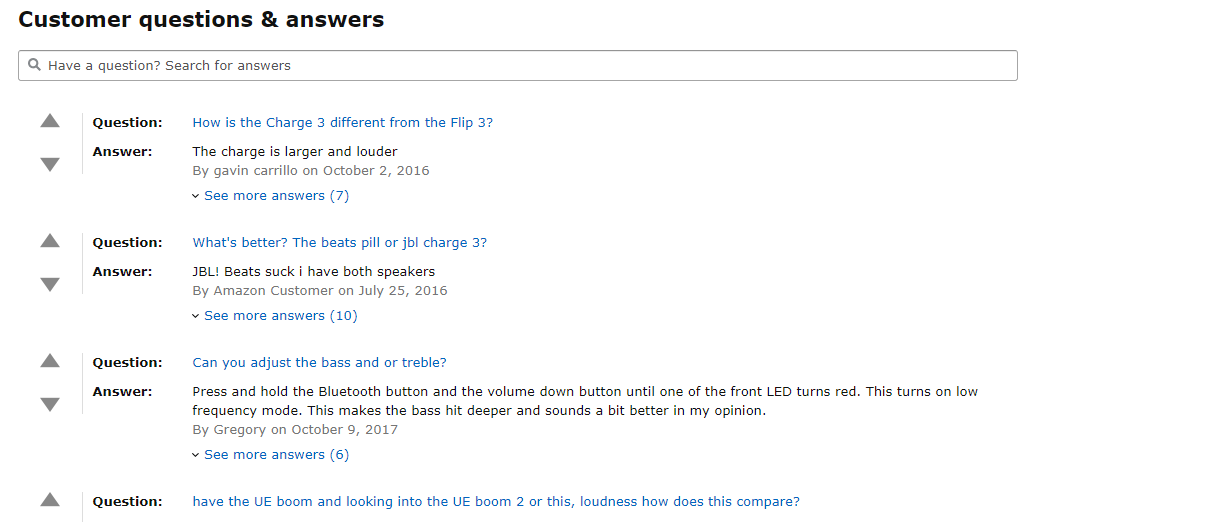
Within these Q&A’s, we want to look for the ones that are very popular and/or repeatedly coming up on different products. This process is a little time consuming – but once you have a list, it’s pretty easy to replicate.
Personally, because I’m a lazy busy marketer, I’m going to use software to help me out with this.
Step 1
Find the competitor listing (as explained above) and copy the URL. Head to Ahrefs. You’ll need a premium subscription to access most features. For this example, I’ll be using this Amazon listing.
Step 2
Enter the URL you just copied and let Ahrefs come up with its analysis. We will be focusing on ‘Organic Keywords’ as shown in the image below. As you can see, this listing ranks in the top 100 for over 2,500 keywords – around the world.
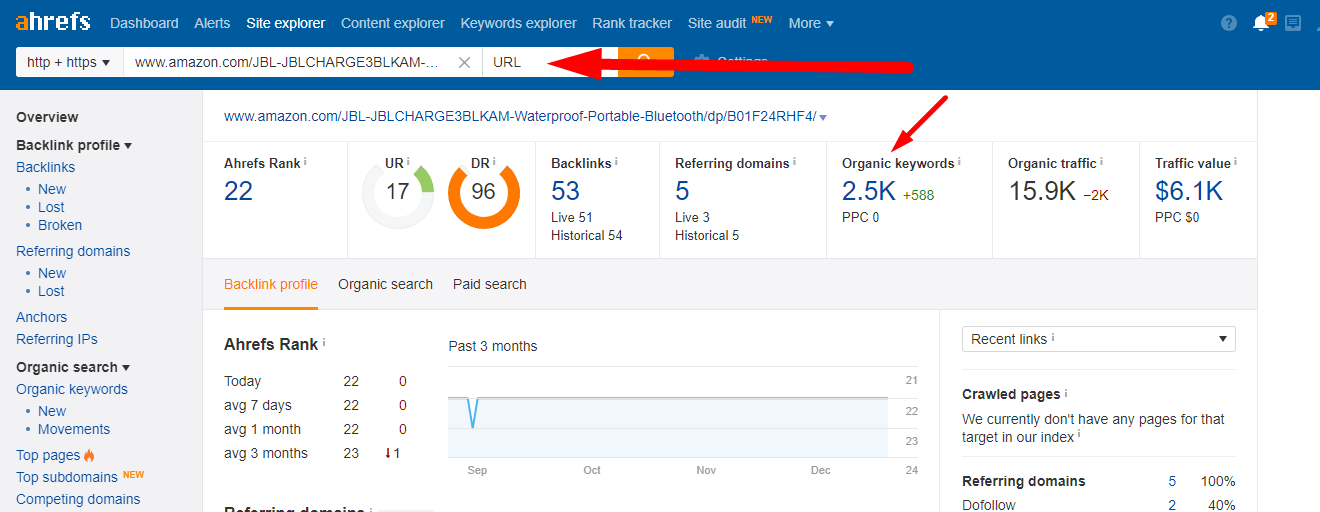
Step 3
Click on the ‘Organic Keywords’ tab to take a closer look.
Now we can see that the URL ranks for 818 keywords in the US (Google.com). Of course, you will need to select your country of interest based on the Amazon marketplace you’re selling in.

Step 4
From here we can then play with the SERP features and other features to analyse the data in more detail and build specific phrases we want to integrate into our content, and more specifically into our customer Q&A’s. Refining will leave you with a more manageable list of keywords – preferably a few dozen that you can quickly run through and parse for quality, traffic and difficulty.
Here’s the thought process to set these filters:
- Position: 1-3: We want to target only the top ranking keywords here.
- Exclude: We don’t want the brand names, model names, product numbers or any other details specific to the competitor listing. So, we ‘exclude’ these using the filter. For example, I’m excluding the words JBLand Charge 3 from these results.
- Word Count: We are primarily looking for long-tail search phrases. So, set the word count accordingly (I recommend setting it to 5 and above).
Step 5
Doing this for multiple top-ranking and best-selling competitor products will leave you with many valuable keywords and long-tail phrases. Once you have these, you can re-optimise the listing to include these in the Q&A section.
As I said earlier, I recommend focusing on phrases with 5 or more words that can be framed as a question.
For example: A term like weatherproof bluetooth speaker for iphones can be rephrased as a question: “Is this a weatherproof bluetooth speaker that’s suitable for iphones?”
Sounds a bit funky but making these examples work is incredibly important.
Backlinks
Links are the number one ranking factor in Google. They are what sales are to Amazon (which we’ll get onto in a second). I’m not going to explain how to build backlinks in this post, but if you are looking to rank within Google for your Amazon listing, then you’ll have to implement a link building campaign to your specific product’s URLs.
Stage 3: Sales – The 90% of the Amazon Ranking Equation
We all already know it but sales massively impact organic rankings.
But the common “the more sales you get, the higher you rank” philosophy is NOT correct.
Not all sales are created equal.
In stage 3 of this Amazon SEO guide, we will:
- See exactly how to implement creative sales generation campaigns
- Break down what the top types of sales are
- Understand which sales really move the needle the most when it comes to improved organic rankings for Amazon products.
Whether it’s Google or Amazon – on-page optimisation will get you only so far. People have started figuring out that link building holds the key to unlocking better organic rankings – the case is pretty much the same with Sales and Amazon.
To rank for anything remotely competitive you need to generate sales. But let me reiterate – Not all sales are created equal…
Keyword Focused Sales On Amazon
In 2018 we coined a phrase called “keyword focused sales”.
This is a specific type of sale that is generated through organic search. A keyword focused sale simply involves a user searching a specific keyword within Amazon and then going onto purchasing a product.
The results are simple, an increase in this keyword’s rankings.
This single technique is one of the most effective methods to rank on Amazon, bar none. Below are a few results (screenshots from the KeyworX software):

These techniques even work for single keywords that are extremely broad and hyper-competitive, such as the screenshot example below for “electrolytes”:
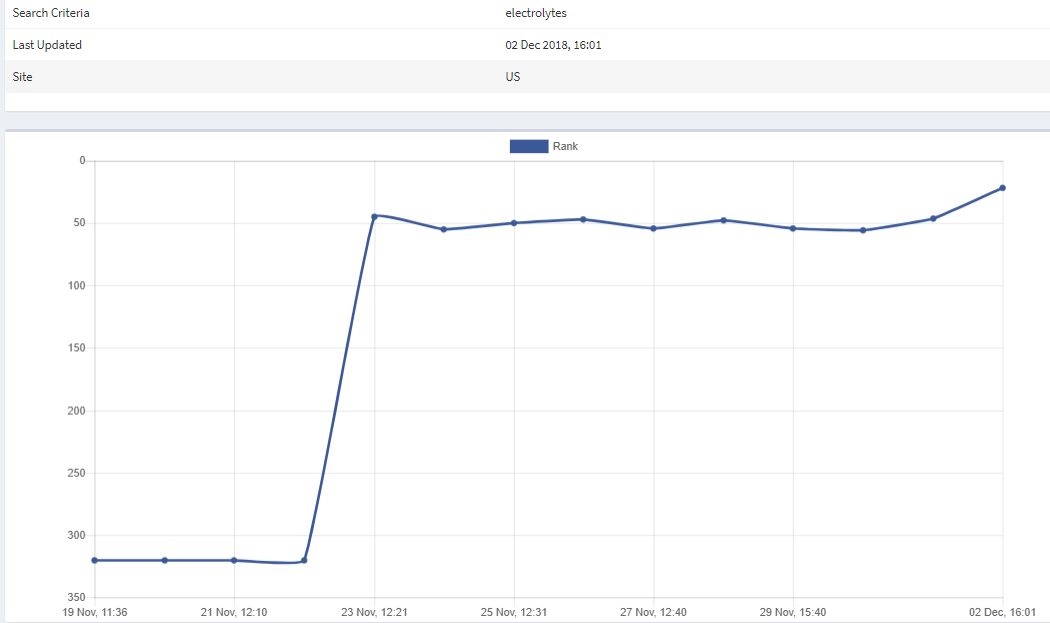
The number of keyword focused sales needed to rank depends 100% on the specific competition for that keyword phrase.
Organic keyword focused sales are an incredibly large ranking factor, but if it’s your sole source of sales you will struggle over time. Instead, we recommend either targeting multiple keywords at once as well as combining the keyword focused sales technique with other Amazon sales generation strategies (7 of which are outlined in detail below.)
Of course, you can also let industry-leading experts handle this for you by purchasing product rankings directly from us, if you would rather know your ranking strategy is the best it could be and focus your time on running your business day to day.
If you think this could be the best option for you, a great first step is to check out our case studies to learn more about the results we’ve achieved for others.
You Don’t Just Need Sales to Move the Amazon’s Organic Ranking Needle. You Need Keyword Focused Sales. See How We’ve Ranked 500+ Products Using Our Bespoke RANK Process.
Let’s Go
You Don’t Just Need Sales to Move the Amazon’s Organic Ranking Needle. You Need Keyword Focused Sales. See How We’ve Ranked 500+ Products Using Our Bespoke RANK Process.
Let’s Go
5 Creative Ways To Increase Sales On Amazon & Hence Rank Higher!
Blogger & Micro Influencer Outreach
A commonly used tactic but one that’s not yet been integrated correctly into Amazon launch processes. With bloggers and micro influencers, the goal should be to find your MOST RELEVANT influencer and not worry too much about the numbers. Engagement is the most important metric when it comes to influencer marketing and not the follower volume.
One influencer with just 1,000 followers who are highly loyal, interested and responsive is better than another with a million followers who simply don’t engage with the content produced.
Email List Outreach
Unlike the micro influencer outreach technique, here we’re looking for sites that offer media packs or we know have a large email list. The process involves reaching out to the site editors or marketing managers and simply requesting to email their list as we have something “your audience” might like. This in itself is a powerful strategy for spiking sales very very quickly. If you can get in front of 20,000 relevant buyers in one email, even at a 0.5% conversion rate, you’ll still have 100 sales!
Content Placements On Affiliate Websites
Affiliate websites are sites that usually rank for “review” or “best of” style product lists. These are very commonly owned by experienced SEOs that will feature a product on top of these lists for a monthly fee. If you can find 2-5 such affiliate placement sites and reach out to them offering an incentive (usually money) to feature your product, you can generate quick sales. The site owners would still earn the same amount of money from commissions – it’s a win-win scenario!
Display Advertising – 1 Month Placements
Display advertising is nothing new. It’s probably one of the oldest marketing techniques on this list. What is new is how well this works when advertising on the right site.
We personally like approaching bloggers and editorial sites in very specific niches related to a client’s product. Instead of (or as well as) using Google Ads, we negotiate placements on a month-by-month basis. Although these can be turn out to be expensive, our product is directly in-front of a number of highly targeted visitors. What’s even better is the fact that we can CHOOSE when the ad is live to optimize the spending.
This makes this strategy extremely powerful as we have control over the timing of the placements. If you can rotate products, you can generate 50+ sales a day and rotate these in the one-month period. This is something we integrate in our campaigns for our larger e-commerce clients. You can read more about this strategy on our e-commerce marketing services page.
Niche & Industry Bridging
Bridging niches is a really important skill for Amazon business owners to learn.
Many people just reach out to influencers or bloggers in their industry. This is a mistake because you lose the ability to generate rapport with these individuals. Instead, you’ll want to create a bridge and actually target an influencer in a different niche. The example I use to explain this to clients is of a “bike lock” product. 100% of marketers and Amazon business owners if they decide to try to integrate affiliate or influencer marketing into their strategies will look for “cyclist blogs” “cycling influencers” etc.
BIG MISTAKE.
Why is it such a big mistake?
In addition to all of the more creative methods above, ensure you are exploring all other more mainstream sales generation techniques that fit within your budgets. These include:
- Amazon Advertising (PPC, Headline Ads and so on)
- Video Marketing (YouTube, to begin with)
- Guest Posts and Other Digital PR Techniques
- Content Assets That Earn Editorial Links
- Celebrity Endorsements
- Offline Marketing
- Using Print Media Effectively
- Using Google Ads to Your Advantage
- Running Highly Targeted Facebook Ad Campaigns
Our core goal here is to spike real sales through the listing for a short period of time. But how much and for how long?
How The Sales Part Of The Amazon Algorithm Works
As mentioned earlier in the post, not all sales are created equal, but they are all weighted.
Before we get to this stage, it’s important to understand that nobody really knows the weighting Amazon uses for their sales mechanism within the A9 algorithm. But from our testing, I can give you some broad outlines as to the types of sales that move the needle in various degrees.
Based on what we have seen across hundreds of products and thousands of sales across all categories, I have arranged these types of sales in the list below (starting from the most effective through to the least effective:
- Full priced keyword focused sales – Organic search + normal checkout.
- Full priced Amazon PPC campaigns – When a specific keyword is searched.
- External traffic sales – This makes sense as you’re bringing external traffic to Amazon and hence helping them earn more.
- Discounted product sales of any type.
The more sales you make the higher you’ll rank. But remember, not all sales are created equal, your marketing should be ROI focused, not throw-everything-in-and-see-if-something-works focused.
In the next stage, we’ll be talking about review generation and Amazon.
Reviews & Amazon: A Love-Hate Relationship
It wouldn’t be an Amazon SEO guide without talking about reviews and how Amazon has a love-hate relationship with these sweet pieces of social proof.
Reviews, as you most likely already know are a major conversions factor to consumers making purchasing decisions. The more (volume) and better (ratings) the reviews, the higher your conversion rate will be. Reviews impact sales and sales impact your organic rankings. In other words, reviews impact search rankings through the sales they help happen. So, it’s safe to say that reviews are an indirect ranking factor.
Amazon does have very specific and clear review guidelines. I recommend going through these review guidelines if you haven’t already.
If you don’t want to fall asleep, I’ll sum up these below.
It’s common sense, right? But it all stops making sense when you are launching a brand new product.
How are you meant to get new reviews or make any sales to them follow up for reviews in the first place? It seems like a frustrating circle that’s impossible to break out of (philosophers call this a causal loop). But rest easy – there are ways out.
As I said earlier, reviews are an indirect ranking factor. They are not directly related to organic rankings! Type in any major search term and you’ll likely see listings with small amounts of reviews outranking competitors with thousands of reviews. Below is an example for the search term “Bluetooth speaker”.
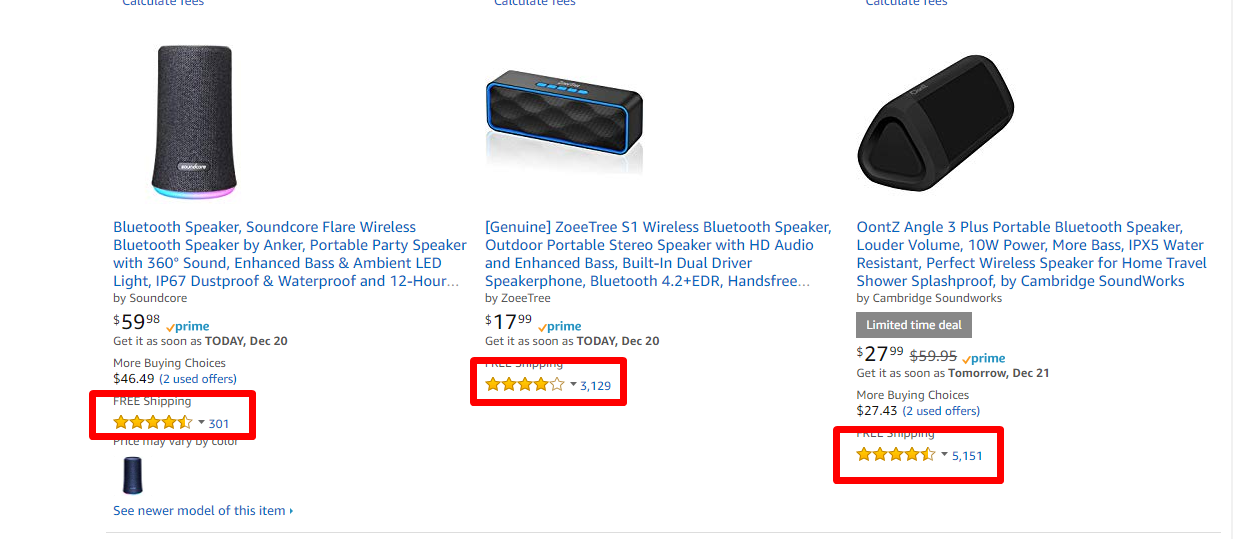
See how a product with 301 reviews can and does outrank two listings with 3,000+ and 5151 reviews?
If reviews were a direct ranking factor, this wouldn’t happen.
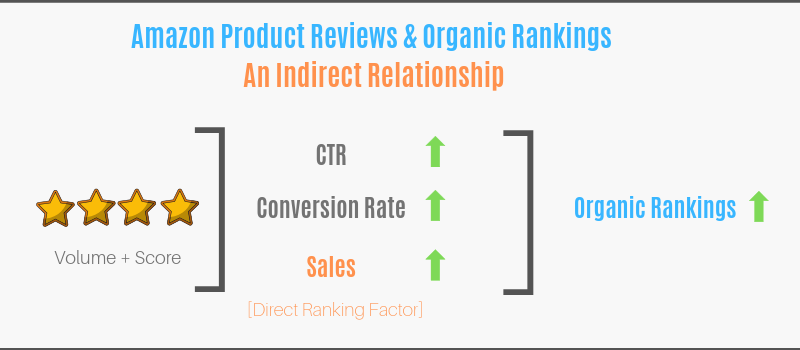
To leverage the indirect impact reviews have on organic rankings to achieve success on Amazon, it’s important to implement systematic review generation strategies once the sales start rolling in.
3 Simple Review Generation Strategies
Automated Email Feedback Requests
A very simple strategy to earn more reviews over time without any additional time investments. There are multiple seller tools that can do this for you. Head over to our Amazon feedback tools post for more information. Once set-up this will help increase your sale to review ratio drastically.
Pay For Reviews
There I said it.
I don’t recommend it, but it still works and if it’s done correctly it’s fairly untraceable.
Hyper Manual Feedback Requests & Rapport Building
Don’t try this for individual customers. Use responsibly only for businesses – it may still well be unethical.
This is a strategy that can bring in additional reviews for B2B Amazon products. Again, let me be very clear in saying that this isn’t really a recommendation. It’s just to show how creative processes can bring in reviews.
- Check order name information (for businesses only).
- Search the business name and find the business phone number.
- Call the business and ask for feedback about the product on the call.
Build rapport, be hyper friendly and just generally build the relationship with your customer ON THE PHONE! Like this:
- Just say – Hey it’s Tom, CEO of XYZ company (saying you are the owner re-frames you as opposed to a customer service person who we all hate talking to.)
- Ask them what they thought, what they liked, anything we can do better.
- Ask them for feedback on Amazon. I like to also talk about how we usually get back to people with discounts and free products AFTER they review on Amazon…. Big disconnect there. AFTER Not before.
- Sign off and “close the deal” – You can close about 1 in 3 people to a review on the phone and just about 1 in 10 via email – which is why getting them on the phone is the key. You’ll also be the only Amazon business owner to ever call a customer!
A Future Proof Amazon SEO Strategy
If you can build the perfect listing, generate keyword focused sales and mix creative sales generation techniques, generate reviews, get those reviews live, ensure you avoid negative reviews and have a great product on top of all that, you’ll rank in Amazon – EASY!
This is the easiest way to increase Amazon search results rankings
Except, something might change…
A while ago I was interviewed about what I think will happen to Amazon search engine optimization techniques in the future. Fortunately, I wasn’t caught off-guard, because this is something I think about on a regular basis.
Having worked in this industry long enough, I can tell you that this is NOT a hypothetical question. Looking at how Google has evolved over the years gives us a look into how I personally believe Amazon search engine marketing techniques will change.
The Amazon A9 algorithm will follow a similar trajectory, albeit more slowly and less aggressively (remember – it’s not one of Amazon’s most important ‘products’).
So, what will change?
Quality Will Increase
Currently, Amazon is grappling with many problems of its own: low-quality listings, broken English, higher return rates and how people generate reviews (fake reviews, for example). Amazon has aggressively targeted fake reviews in the past few years, going so far as suing Fiverr directly.
In February 2011, Google released an update called Panda. Despite the tame name, this update wiped out millions in affiliate marketer & SEO consultant earnings. Superficially speaking, the update itself was aimed at low-quality sites from a content point of view. Copied, scraped and poorly created content was the chief target, meaning that millions of low-quality sites were hit very hard and de-indexed. 95+% of traffic and all the income associated with it – poof – GONE!
Amazon will likely build a similar update, with the goal to have listings that read well and avoid broken English, duplicate content and generally poor optimization overall, instead of just basing the majority of factors on sales directly. One of the reasons this makes sense from a business point of view is to reduce the number of low-quality Chinese sellers driving out genuine, quality-focused businesses.
There are multiple other reasons that this makes sense to Amazon’s business model which I can’t really get into here and now. If you want to ask me about these, you can always hit me up on Twitter.
“Amazon Panda” will change the game, but what would ultimately turn Amazon SEO services & marketing agencies on its head would be an algorithm update similar to what Google’s Penguin update.
The Panda update in 2011 was big but the Penguin update actually changed the SEO game forever. Released on 24th April 2012 (version 1) it impacted close to 3.1% of search queries. If you’ve ever implemented an SEO campaign, you’ll know it’s a massive amount of organic search results.
In short, this update aimed to remove link spam. Any site that had been using questionable link building tactics was hit and penalised. Organic traffic for some companies went to zero and some never recovered.
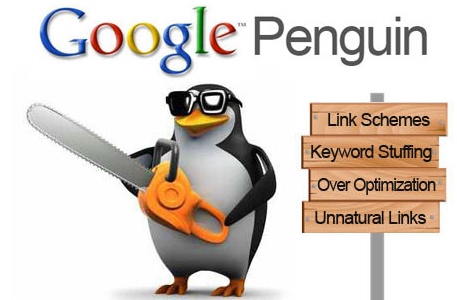
Image source.
Amazon’s “Penguin” update would involve targeting elements such as sales manipulation, discounted product giveaways (which they’ve already combated in many cases) and overall search engine manipulation.
Other trust signals will become more and more important. The industry chatter tells me that generating more than 3 reviews per day is a signal that Amazon uses to identify review manipulation. Other tools such as Fakespot or Reviewmeta are also very common for spotting fake reviews. If third parties are building tools that semi-accurately identify fake reviews, you can be sure that Amazon has signals and software to reduce the amount of review spam on their platform.
Whether Amazon decides to invest the resources into this or not is yet to be seen, but being aware of the changes that potentially could be made in the future helps us prevent this now.
This leads us to a very important question…
How Can You Future Proof Your Ranking Strategies?
It’s simple.
Don’t leave footprints.
A footprint is anything an algorithm (or a human) can use to reverse engineer the entire “network” or “syndicate” of the issue.
For Example: Having one fake review isn’t an issue, having 10,000 might be. Especially if you run a review service that is public, that runs on the same IP address, that uses broken English for reviews… Talk about a footprint **Cough, Cough Fiverr**!
This is one of the reasons Amazon businesses are so tough at scale.
If you want to stay 100% safe, just ensure you stay within Amazon’s terms of service and avoid any algorithm manipulation. It’s very much possible to build a profitable Amazon business without implementing any Amazon SEO strategies — Just ensure you have the best product in the market, and the best price and you’ll be fine!
Amazon SEO Myths & FAQs For Ranking On Amazon
Myth #1: Discounted Product Giveaways Still Work Great!
The first obvious Amazon SEO myth we have to cover is discounted product giveaways. They just don’t work (very well) anymore. This was a very sharp change Amazon made almost 2 years ago now.
The main tweak involved how Amazon weighted the ranking signal for discounted product sales.
Previously Amazon weighted discounted products (80%+) still relatively heavily. So a small amount of discounted product giveaways resulted in large organic ranking movements. The tweak that was made downgraded the weighting used. With this in place, running discounted giveaways still have somewhat of an effect, but a small enough one that generating them for this purpose doesn’t make economic sense.
Myth #2: Amazon FBA & Prime DIRECTLY Impact Organic Rankings.
No, they don’t. Not directly.
Remember how we talked about reviews being indirect ranking factors? It’s a more or less similar case with FBA and Prime.
Although simply being on FBA doesn’t give you some kind of artificial boost in organic search rankings, what it does do is improve your conversions (leading to more sales) and hence higher rankings. The same story with Prime – Prime products usually have much higher click-through rates that lead to higher sales and higher rankings.
Over the coming months, we’ll be expanding these FAQ’s & Amazon SEO myths section. If you have any additional ones you’d like us to add here, feel free to get in touch with our Amazon team.
I know it can be tough to make sense of all the factors we’ve talked about here – especially if SEO is something you haven’t seen a lot of before. So, here’s an easy takeaway – a handy infographic that sums up Amazon’s organic ranking factors. You can also use it as a checklist for all your products.
Amazon’s Organic Rankings Factors [Infographic]

Our Amazon Marketing & SEO Services
Liked this Amazon SEO guide?
If you’ve tried using these ranking strategies for your listings, we’d love to hear about the results. As ever, do feel free to share this guide within your seller circles – I’m sure there are people you know who can benefit from this.
I know selling on Amazon can be quite a ride, even for the most experienced sellers. If you have any questions about the strategies we have discussed here – or anything Amazon, in general – we’ll be more than happy to help.
Of course, if the main thing you’ve learned from this guide is how much goes into managing an Amazon SEO agency, and you are worried about how much time and investment it will take, you can order rankings directly from us and let us drive your Amazon products up the search results pages, even in the most competitive of search terms.
If you are thinking of taking this route, we recommend reading our case studies page to see just a few of the results we have been able to get for previous clients.
We have developed our own in-house methodology for this base on years of research and as such our results stand apart from the rest of the industry.
At Amazon SEO Consultant, we keep things simple – for us, it’s all about helping your products do better. With the right combination of experience and expertise, it’s definitely possible to push the sales higher than you likely think possible. To let us help your Amazon business register more sales week in and week out, or even just to ask some questions regarding Amazon SEO and listing creation go to our contact/proposal page now to learn more about what we do.
Without Organic Rankings, You Just Can’t Make FBA Work for You. Watch How We’ve Ranked 500+ Products on Amazon Across Competitive Niches in the Past Year.
Let’s Go
Without Organic Rankings, You Just Can’t Make FBA Work for You. Watch How We’ve Ranked 500+ Products on Amazon Across Competitive Niches in the Past Year.
Let’s Go
for o
